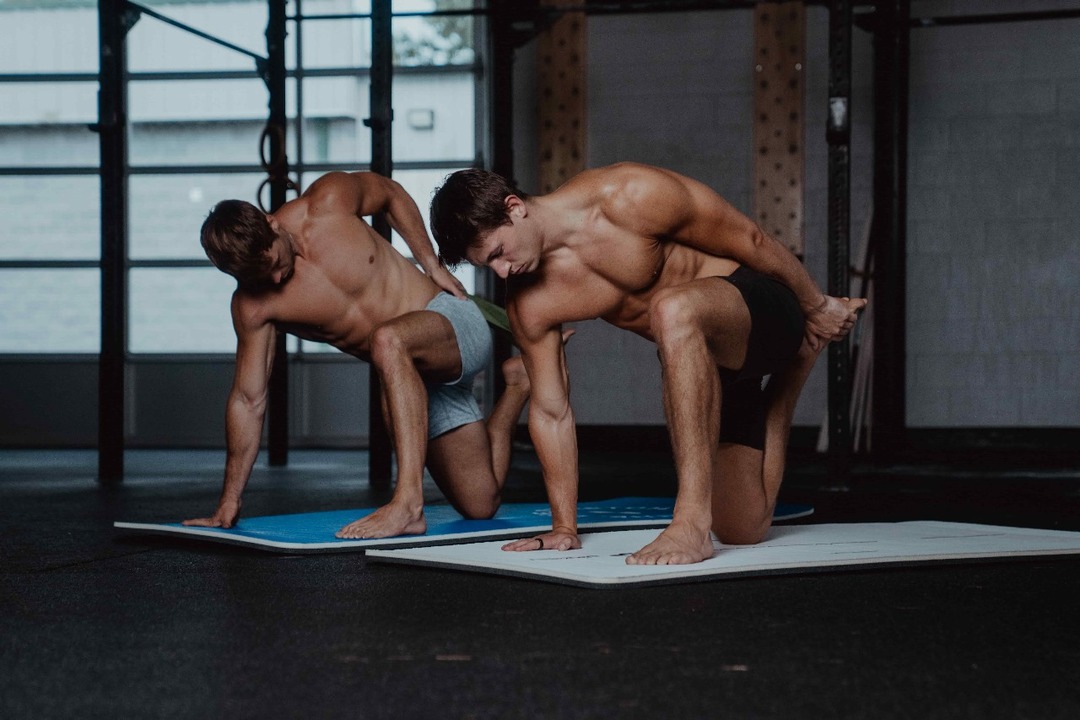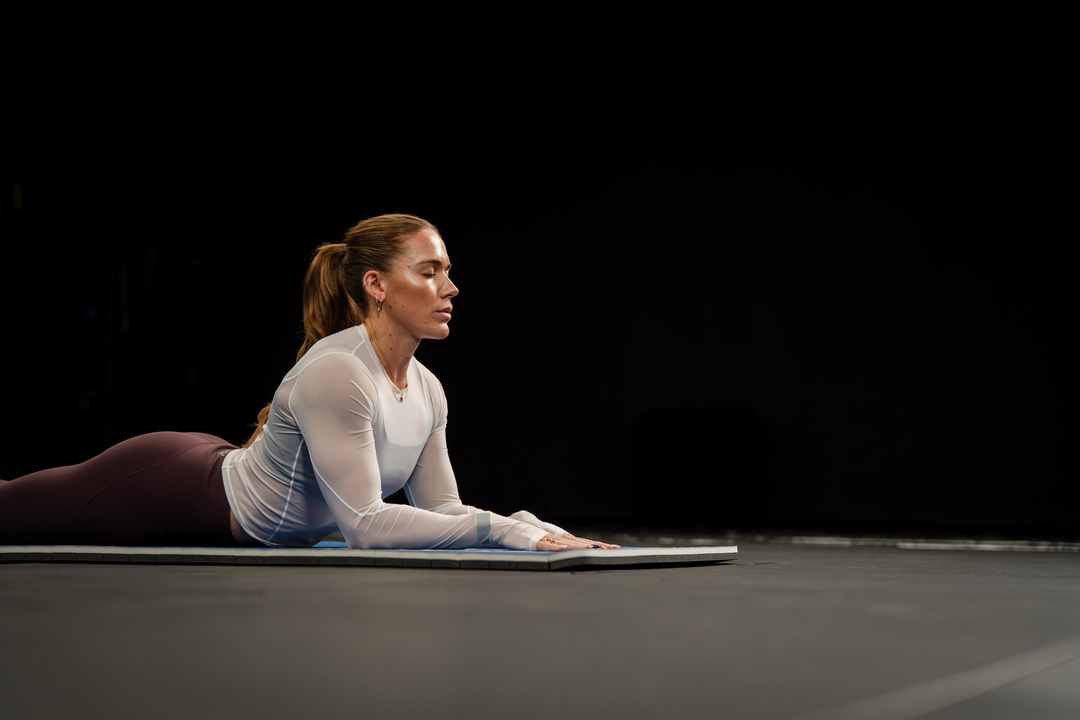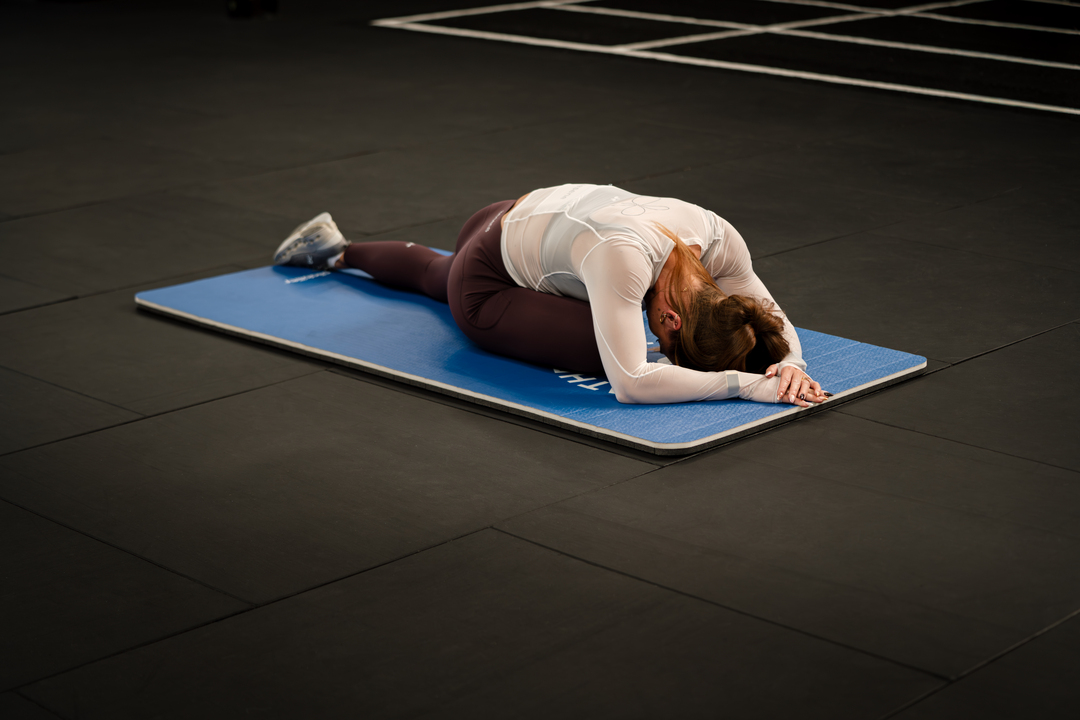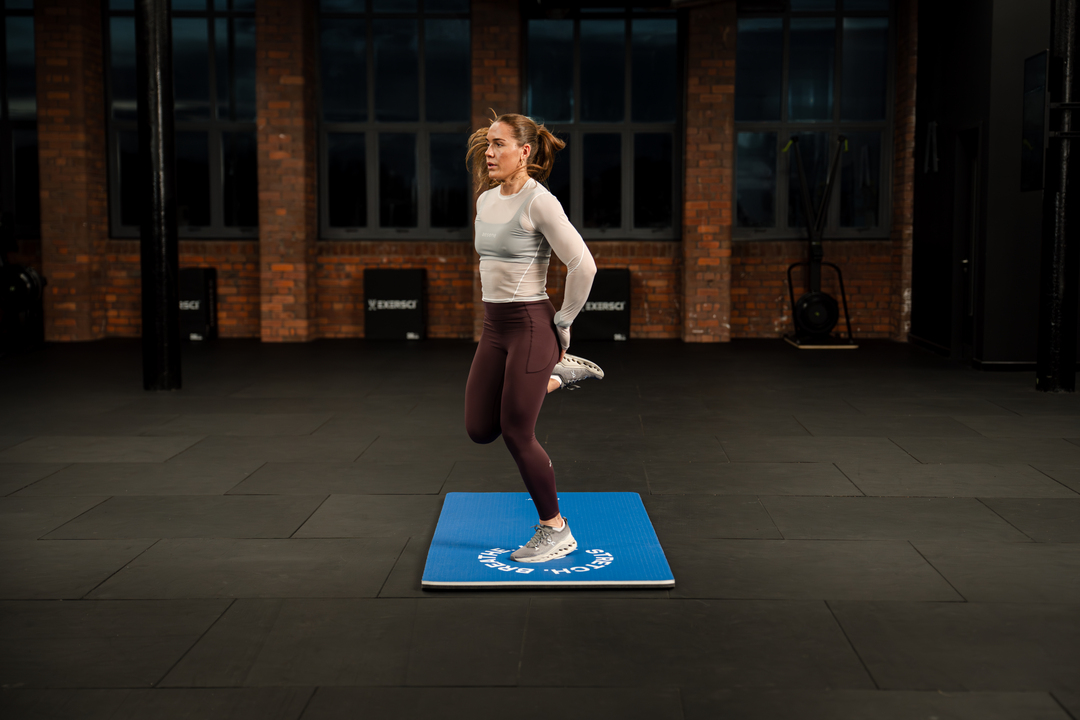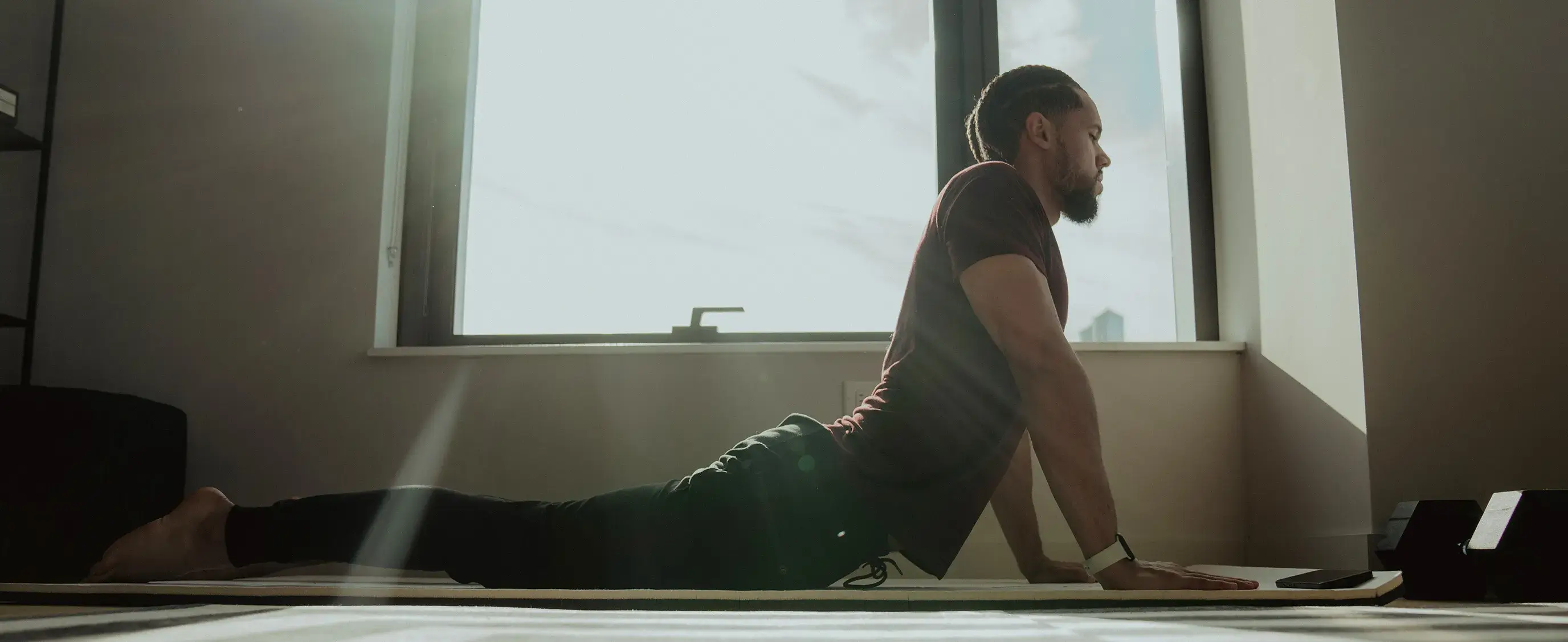We’ve all been there. You’re the first to arrive at the gym and sit on a mat to stretch while waiting for your friends. Before long, they show up and are on your computer doing some sort of “dynamic warmup” instead of stretching. You try to play it cool, but inside, you’re dying. You know you should have done your stretches to help improve your flexibility before this workout. You are about to get a new embarrassment when you must stop and catch your breath five minutes into the workout. Mobility Exercises' apps offer a solution to this all-too-common scenario, helping athletes improve their flexibility and mobility to perform better, prevent injuries, and reduce soreness. This article will help you find the best solution for your unique needs.
Pliability’s Mobility App is a valuable tool for improving flexibility, boosting mobility, and achieving greater agility through convenient, guided routines.
Is Stretching Good for You?

Regular stretching has many benefits. Not only can it help increase flexibility, an important factor in fitness, but it can also improve posture, reduce stress and body aches, and more.
Stretching Increases Flexibility
Regular stretching can help increase flexibility, which is crucial for overall health. Improved flexibility can help you perform everyday activities with relative ease and delay the reduced mobility that can come with aging.
Stretching Increases Your Range of Motion
Moving a joint through its full range of motion gives you more freedom of movement. Stretching regularly can help increase your range of motion. One study found that static and dynamic stretching effectively increase the range of motion. Proprioceptive neuromuscular facilitation (PNF)-type stretching, where you stretch a muscle to its limit, may be more effective for immediate gains.
Stretching Improves Performance in Physical Activities
Performing dynamic stretches before physical activities has been shown to help prepare muscles for the activity. It may also improve performance in an athletic event or exercise.
Stretching Increases Blood Flow to Your Muscles
Performing stretches regularly may improve your circulation. Improved circulation increases blood flow to your muscles, which can shorten your recovery time and reduce muscle soreness (also known as delayed onset muscle soreness or DOMS).
Stretching Improves Posture
Muscle imbalances are common and can lead to poor posture. One study found that a combination of strengthening and stretching specific muscle groups can reduce musculoskeletal pain and encourage proper alignment, which, in turn, may help improve posture.
Stretching Helps Heal and Prevent Back Pain
Tight muscles can lead to a decrease in your range of motion. When this happens, you increase the likelihood of straining the muscles in your back. Stretching can help heal an existing back injury by stretching the muscles. A regular stretching routine can also help prevent future back pain by strengthening your back muscles and reducing your risk for muscle strain.
Stretching Is Great for Stress Relief
When you’re experiencing stress, there’s a good chance your muscles are tense. That’s because your muscles tend to tighten in response to physical and emotional stress. Focus on areas of your body where you tend to hold your stress, such as your neck, shoulders, and upper back.
Stretching Can Calm Your Mind
Participating in a regular stretching program not only helps increase your flexibility but it can
also calm your mind. While you stretch, focus on mindfulness and meditation exercises, which give your mind a mental break.
Stretching Helps Decrease Tension Headaches
Tension and stress headaches can interfere with daily life. In addition to a proper diet, adequate hydration, and plenty of rest, stretching may help reduce the tension caused by headaches.
Related Reading
- Ankle Mobility Exercises
- Shoulder Mobility Exercises
- Hip Mobility Exercises
- How To Improve Flexibility
- Thoracic Mobility Exercises
- Stretch Before Or After Workout
- Wrist Mobility Exercises
- Mobility Exercises For Beginners
- Best Stretching Routine
- Back Mobility Exercises
- Lower Body Mobility Exercises
- Leg Mobility Exercises
- Mobility Exercises For Athletes
How Do You Start Stretching?

If you haven’t stretched much, it can be tough to know how to start. You might even be intimidated, especially if you think you’re not that flexible. That’s why starting small is best. Slot in time for a five or 10-minute stretch session a few times a week, Marcel says.
As you become more comfortable with stretching and realize how good it feels, you might stretch for longer. You should also stretch before and after your workout; see below for the best stretching type.
The Different Types of Stretching, Explained
Stretches tend to get lumped into one category. Yet there are two main types of stretches, each with its benefits.
Dynamic Stretching
First is dynamic stretching, when you move your body to prepare for exercise. This type of stretching is best done before a workout. Common exercises include walking lunges, hip circles, arm circles, and leg pendulums.
Static Stretching
The other type is static stretching, where you hold the stretch for roughly 30 seconds. For instance, you might do a standing quadriceps or hamstring stretch. With these stretches, you lengthen muscles that have contracted during your workout. Marcel says that it’s best to save static stretches after your workout.
Stretching vs Flexibility
Flexibility is a noun, whereas stretching is a verb. You practice stretching to attain flexibility. The best flexibility programs are synonymous with stretching programs and Stretching Apps. To become more flexible, more strength or stamina training is needed. Your muscles will grow in the ways they are used, which can and will lead to rigid muscle growth. Stretching is vital to attaining and maintaining flexibility and a high range of motion.
Mobility vs Flexibility
Flexibility through stretching is only how flexible and supple your muscles are. Mobility goes a step beyond this and combines suppleness with strength. As a standalone exercise, we favor Mobility vs flexibility since it also builds muscle and, more importantly, joint strength. This makes Mobility Apps usually the superior choice for increasing range of motion (ROM) and maintaining sufficient strength throughout the entire ROM.
Stretching Apps and Flexibility programs complement other physical activities like dynamic sports, weightlifting, and Calisthenics. You stretch before your exercise, practice, or game. A Mobility Program can be conducted with these activities on off days, for instance, between workout days. All Mobility Programs should also include regular stretching as a warmup before your workout or activity.
Pliability: The Best Yoga App for Athletes
Pliability offers a fresh take on yoga tailored for performance-oriented individuals and athletes. Our app features a vast library of high-quality videos designed to:
- Improve flexibility
- Aid recovery
- Reduce pain
- Enhance range of motion
Personalized Mobility Programs for Optimal Health
Pliability provides daily-updated custom mobility programs for those interested in optimizing their health and fitness. It also includes a unique body-scanning feature to pinpoint mobility issues. If you're feeling limited by pain or your ability to move, Pliability aims to complement your fitness routine and help you move better.
Sign up today for seven days free on iPhone, iPad, Android, or our website to use our mobility app to improve flexibility, aid recovery, reduce pain, and enhance range of motion.
What are Stretching Apps & Their Importance
A Stretching App is a mobile phone app that guides you through stretching exercises. It is a simple way to incorporate stretching into your daily routines, whether as standalone exercises or as a warmup for calisthenics or any other sport. You download the Stretching App on your phone and follow its stretching program.
Depending on the app, you can quickly learn from experts and receive guidance to help you prep your body for a tough workout or cool down after one. Whether you’re looking for dynamic movements prerun or want to bring the heart rate back down with more static poses post-workout, an app can show you how it’s done.
Stretching Apps vs Stretching Programs
The Stretching App is software on your phone that gives you information, pictures, videos, etc., to do stretching exercises. These stretching exercises and the pattern and order they follow are the stretching program.
The two words have different meanings, but every stretching app contains a stretching program. You could follow a stretching program in some other form, like gleaning it from Calisthenics Books. For this article, we might differentiate between the app and the program at some points, but when it comes to products, we’ll review Stretching Apps and one of the criteria we use to rate those apps is their stretching program.
Related Reading
- Golf Mobility Exercises
- Upper Body Mobility Exercises
- Mobility Exercises For Runners
- Can You Over Stretch
- Squat Mobility Exercises
- Functional Mobility Exercises
- Why Stretching Is Important
- Foot Mobility Exercises
- Arm Mobility Exercises
- Hamstring Mobility Exercises
- Elbow Mobility Exercises
- Rotator Cuff Mobility Exercises
- Bed Mobility Exercises
- What Are Mobility Exercises
- Full Body Mobility Exercises
23 Best Stretching Apps For 2024
1. Pliability

Pliability offers a fresh take on yoga tailored for performance-oriented individuals and athletes. Our app features a vast library of high-quality videos designed to:
- Improve flexibility
- Aid recovery
- Reduce pain
- Enhance range of motion
Personalized Mobility Programs for Optimal Health
Pliability provides daily-updated custom mobility programs for those interested in optimizing their health and fitness. It also includes a unique body-scanning feature to pinpoint mobility issues. If you're feeling limited by pain or your ability to move, Pliability aims to complement your fitness routine and help you move better.
Sign up today for seven days free on iPhone, iPad, Android, or our website to use our mobility app to improve flexibility, aid recovery, reduce pain, and enhance range of motion.
2. StretchIt
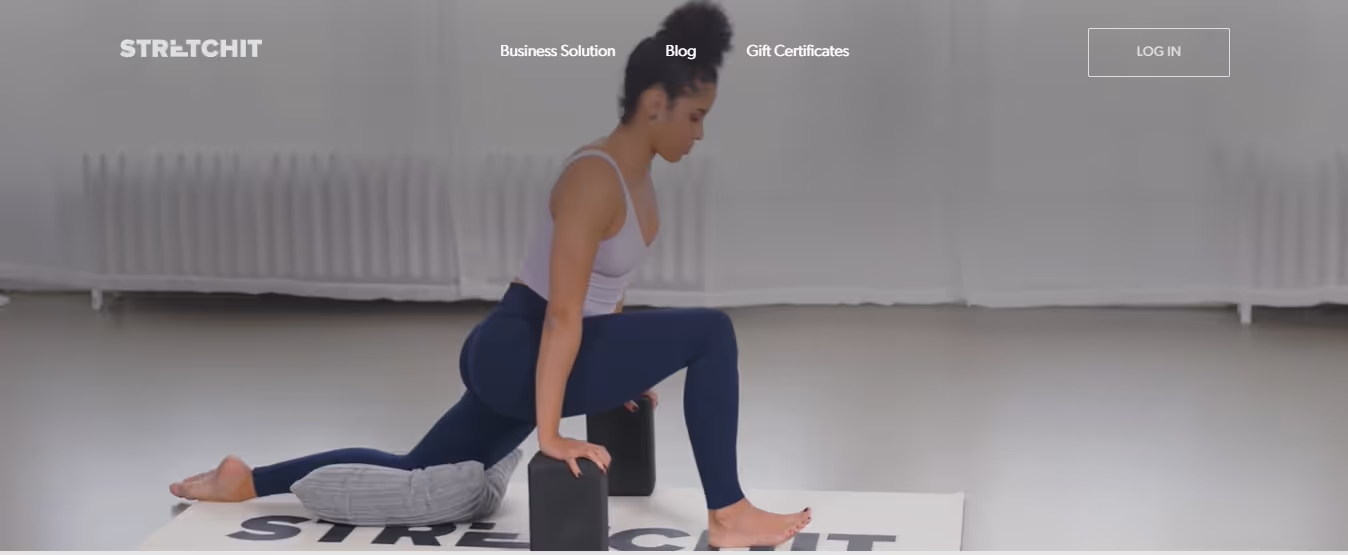
Key Specs
- Price: $19.99 per month
- Notable Feature: Popular stretches from multiple types of exercises
- Average Customer Review: 4.8 stars
Why We Chose It
Stellar reviews in the Apple app store make StretchIt a great choice for those who want to become more flexible.
Pros
- Stretching challenges
- Easy-to-use interface
- Can upload progress pictures into the app
- Personalized class suggestions
Cons
- Have to pay to access the challenges
- Exercises will take up storage space on your phone
The StretchIt app is about setting and reaching your stretching goals to improve movement and flexibility. The app offers a variety of classes (with video demonstrations) that combine stretches from yoga, gymnastics, bodyweight training, pilates, and more. Each class is sorted by categories such as bendy back, full-body stretch, or splits. One of the great benefits of this app is that you can filter the various classes by length and difficulty to suit any time constraints or skill level you’re currently at and offer 5 to 45-minute classes.
Another perk of this app is that you can download the stretching classes directly onto your phone, tablet, or computer if you practice your stretches in an area without Wi-Fi or cell service. StretchIt offers curated training programs and challenges, where you’ll take before and after pictures to track your progress. The app will ask for feedback after each class you take to further guide you toward the next one or challenge to help you push your flexibility (safely) and reach your stretching goals. StretchIt offers a free trial and then charges you once that period is over. It also offers various plans: The app costs $19.99 monthly, and annual access costs $160.
3. Stretch & Flexibility at Home
Key Specs
- Price: $4.99 per month
- Notable Feature: Weekly goals and workout reminders
- Average Customer Review: 4.8 stars
Why We Chose It
This app offers whatever type of stretch you need each day. From post-running stretches and pain relief to before-bed stretching and more, the Stretch & Flexibility at Home app is ideal for anyone looking to become more flexible.
Pros
- Suitable for all skill levels
- Variety of stretches for different scenarios
- Voice and video guide
Cons
- Must pay after the trial is over
Whether you can barely touch your toes or have mastered the splits, the Stretch & Flexibility at Home app is ideal for any skill level. One of the app's benefits is the stretches for specific needs. For example, you can practice specific stretches designed for the body after a long run or choose one of the many pain relief stretches the app offers for whichever area of your body might be ailing you that day. The app offers:
- Dynamic stretching
- Stretching exercises for flexibility
- Warm-up exercises
- Stretching routines
- Stretching for runners
- And much more
Stretch & flexibility will lead you through various stretches using a voice and video guide so that you can see how each move is done properly. With the app, you can track how many exercises and calories you have burned after each exercise. You can also set weekly goals for how many days you want to practice stretching. The app does offer multiple exercises and stretches that are available for free, but if you would like access to all the stretches on the app, you have to sign up for a subscription. The subscription service offers a free trial at first, and then charges $4.99 per month or $19.99 per year.
4. Start Stretching

Key Specs
- Price: Free
- Notable Feature: In-app adjustable timer to hold stretches
- Average Customer Review: 4.6 stars
Why We Chose It
We love this app for beginners who don’t want to spend too much time doing stretching exercises.
Pros
- Free with the option of in-app purchases
- Short exercises
- Specifically designed for beginners
Cons
- Few stretches are included in this app
- Illustrations show exercises rather than video
Start Stretching is perfect for all beginners who want to incorporate some stretches into their daily or weekly routine but aren’t interested in committing more than 10 minutes per day to stretch. The app's interface is easy to use, and the stretches are simple. Unlike other apps that offer video tutorials of each position, this app only has illustrations; they’re easy to follow, but the lack of video tutorials is something to consider when downloading Start Stretching.
You can use the in-app timer during your stretching exercises and adjust the length of time to hold each stretch. We love the Start Stretching app because the exercises are short (just a few minutes each) and require no equipment. The biggest downside with this app is the need for more options; you only have access to the available stretches, and there is no option to add more stretches or change the routine. Advanced stretchers probably won’t be challenged with this stretch app. The app is free to download and use and doesn’t require any trial period or subscription payment.
5. Splits Training
Key Specs
- Price: $29.99 per year
- Notable Feature: Customized training plans
- Average Customer Review: 5 stars
Why We Chose It
This app makes the seemingly impossible possible, nailing the splits is easier than you think if you follow its gradual steps.
Pros
- Splits exercises for various skill sets
- Step-by-step instruction
- Only takes 10 minutes per day
Cons
- Only focuses on splits, which is not ideal for those looking for a variety of stretches
- Must pay after the trial is over
Learning how to do the splits isn’t just a great party trick. It can help prevent injuries, relieve any muscle stiffness, increase muscle strength, and improve circulation. Whether you’re a gymnast or have never attempted the splits in your life, Splits Training will help you get there, regardless of which skill level you’re currently on. To stretch your splits, all you need is 10 minutes a day. The app offers step-by-step instructions and animated video guides to help you learn dynamic and static stretches to open your hip flexors and gain more flexibility.
It also promises to have you improve your splits after 30 days of consistent practice. You can customize your training plan within the app and choose between beginner, intermediate, or advanced levels. This app's beginner level is free, but the intermediate and advanced levels require payment. It offers a free trial and then charges $19.99 per year for the subscription.
6. Bend

Key Specs
- Price: $29.99 per month
- Notable Feature: Create your routine with your favorite stretches in the app.
- Average Customer Review: 4.7 stars
Why We Chose It
We like Bend for its practical approach to pain management and prevention and its proactive aim of helping users maintain and gain flexibility as they age.
Pros
- Has programs that help with stress and sleep
- Has targeted routines to help ease pain and increase flexibility in specific body parts
- Detailed instructions to increase confidence and prevent injury
Cons
- Must pay for most content
Since we know our bodies consistently respond to what we do, Bend aims to get you stretching every day. It reminds you at your chosen times to honor your commitment to stretching and then tailors its suggested routines to the goals you've set. Whether you want to decrease stress and anxiety, reduce pain, improve athletic performance, increase range of motion, and target specific parts of your body (i.e., tech neck), Bend will suggest moves to help you achieve it.
7. Calm App

Key Specs
- Price: $14.99 per month
- Notable Feature: Get a new daily mindful movement practice with the app's "Daily Move"
- Average Customer Review: 4.8 stars
Why We Chose It
With all that it offers in the way of meditation, breathing, and sleep stories, the Calm App's body offerings can get overlooked. But they're a great benefit in and of themselves.
Pros
- It has programs tailored to different needs throughout the day, such as morning wake-up, afternoon reset, and evening wind-down.
- Focusing on mindfulness and intentionality, these gentle routines aim to move you from an anxious, tired state to a place of calm alertness.
- Most routines are short and can easily fit into your busy day.
Cons
- You must pay for most content
The Calm App is acclaimed for a reason. With trusted experts and a proven track record, it is a leader in the mindfulness and meditation space. That's why longtime users were thrilled when it offered movement and stretching videos. These short, gentle routines are geared toward helping you feel better, less stressed, more mobile, and alert.
The fully guided videos are tailored to all ability levels and use the tenets of mindfulness to bring attention to the places in your body that require extra care and tending. Incorporating these movement videos into your day is simple and easy, and afterward, you will no doubt feel less stiff, less pain, and more renewed and relaxed.
8. Down Dog

Specs
- Initial cost: Free
- Additional extras: Subscriptions start £9.99Built for Personalised routines, yoga and stretching hybrid workouts
Reasons to Buy
- Stretches incorporated into yoga routine
- Suitable for all levels
- Personalised workout every time
Reasons to Avoid
- Yoga focus might not be of interest to some
- You need separate apps to access other workouts by Down Dog
Down Dog is one of our best yoga apps for good reason. No two Down Dog routines are the same, which is something you will love about the app. There are over 60,000 configurations, and each yoga-based stretching session will be catered to your chosen practice, experience, and pace with your chosen instructor and music genre.
Whether you do yoga every day or you're looking for the best yoga stretches for beginners, you're sorted. What's more, the Boost feature allows you to choose an area of the body that needs a little more attention, and in response, Down Dog creates a practice that ensures this focus is well stretched by the end of your routine.
9. Stretch Club
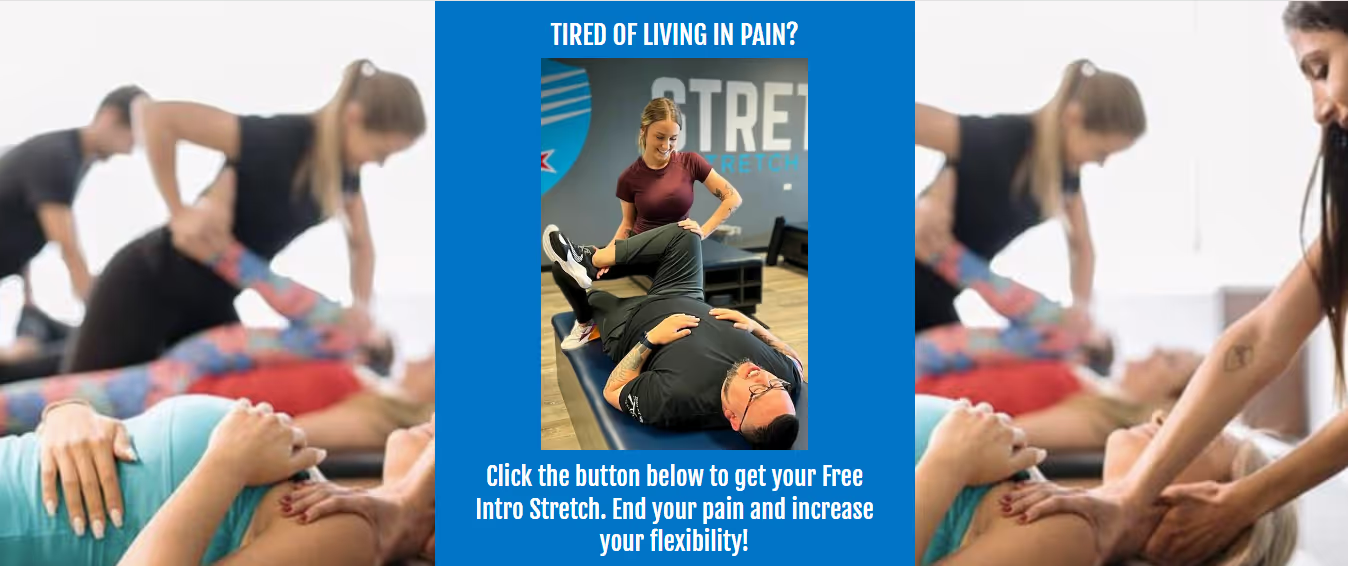
Specs
- Initial cost: Free to download
- Additional extras: £8.99 per month
- Built for: some text
- Daily stretching
- Goal-orientated stretches
- Programs for better stretching form
Reasons to Buy
- Simple interface
- Programs for desk workers
- Programs targeting specific areas
- No need to sign up with an email
Reasons to Avoid
- Many sessions are only available with PRO
If you're someone who spends most of their day sitting down at a desk, Stretch Club could be the pick of the best stretching apps for you. Of all the programs available on the app, of which there are many, you’ll find the most unique ones focused on realigning posture and issues relating to desk work. While this is similar to Bend in many ways, there is more focus here.
Accompanying these desk-based stretching routines were other useful programs in the same format, such as:
- Full Body
- Sleep
- Expert
- Quick Stretch
- Lengthen
There is plenty of stretching for runners' sessions. On the homepage, you'll find programs to target specific body areas, such as lower back and hip stretching routines, which is ideal if you want to strengthen a particular area.
If you're looking for a stretching app that works as one of the best habit tracker apps, Stretch Club may be for you. You can also jump into different stretching programs and create your routine through the app. You'll need the PRO membership to do this, but it's well worth it if you want to make stretching part of your daily routine. When you start to build consistency, you'll then be able to see your progress on the weekly and monthly analytics pages.
10. Fiit
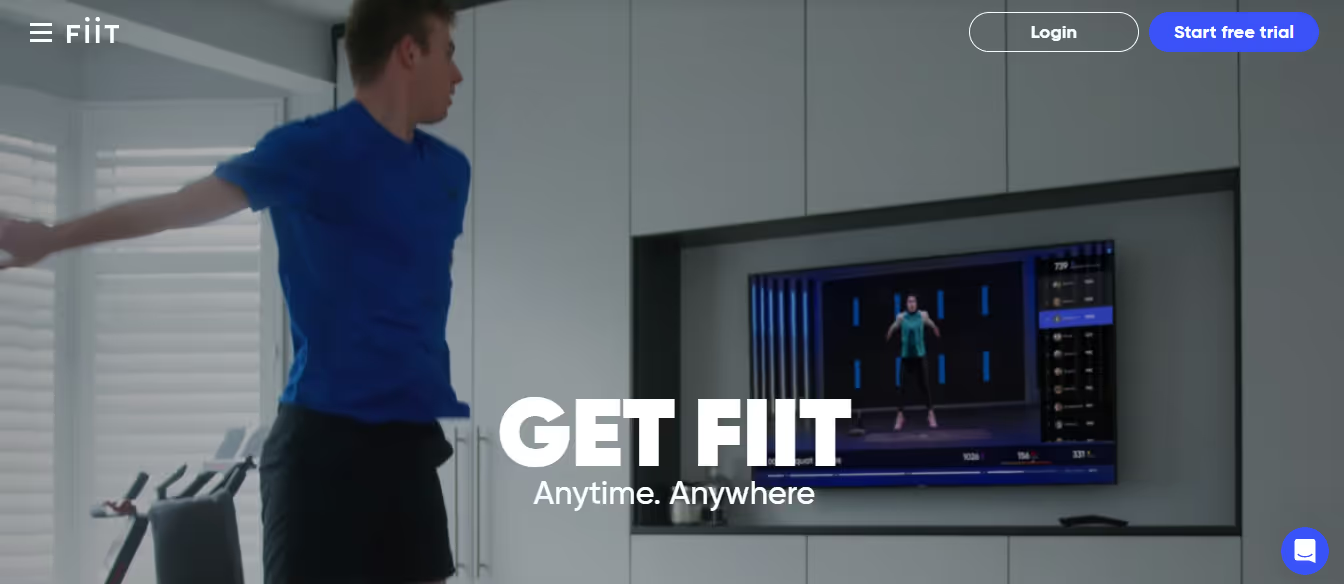
Specs
Initial cost: Free to download
Additional extras: Subscription for Essential starts at $7.99 / £7.99 per month
Features: Professional video workout classes featuring stretching routines, celebrity trainers
Reasons to Buy
- Suitable for beginner through to advanced
- Professional videos
- Personable celebrity trainers lead videos
- Plenty of choice
- Stream from phone or television
Reasons to Avoid
- It is not worth it for those who only want to focus on stretching
Fiit is best known as one of the top workout apps, with its professionally produced classes and range of celebrity trainers. It also offers stretching routines for those interested in paying for a premium app and getting state-of-the-art features. Signing up for this app will cost you upward of £7.99 per month for the essential package, or unlimited starts at £9.99. With this cost comes an almost limitless number of classes, including everything from classic strength training workouts to be done at home to treadmill workouts you can take into the gym with you.
Yoga, Metcon workouts, and Pilates are heavily featured. Within the stretching categories, you'll find practices designed for a pre-or post-workout flow, such as yoga for runners, mobility drills, full-body stretches, and functional movement patterns. While Fiit is undoubtedly the go-to home workout app, if your goal is to simply stretch and get flexible, try one of the other best stretching apps. The cost of Fiit, plus the almost limitless number of classes available, is much better suited to those who want a multi-functional app that offers a bit of everything from the comfort of your living room.
11. Peloton

Cost: $14/month
Pros
- Has a wide variety of pre and post-run content
- Connects with Apple Health
- Tracks progress based on the number of workouts you completed, total duration of workouts, total number of calories burned, and how much time you spent training each muscle group
- Top-notch trainers
- 30-day free trial
Cons
- Doesn’t connect to Apple Music or Spotify
- You don’t have to buy a bike or a tread to be a part of the Peloton community
The Peloton app has a huge library of content, workout warmups, cooldowns, and post-run-specific stretches included; you’re bound to find a class that works best for you.
Even better: You can access various other classes to help you unwind and get into a parasympathetic state, including top-notch yoga and meditation sessions. Of course, the app membership also gives you many different cross-training options, from cycling to bodyweight cardio routines to solid strength workouts.
12. Nike Training Club

Cost: Free
Pros
- Instructors demonstrate each move as you follow along
- Connects with Apple Music and Spotify
- Top-notch instructors
- Tracks progress based on the type of workout you complete, duration, and perceived amount of effort (you just have to enter this measure after each workout manually)
Cons:
- Doesn’t offer consistent narration for each video
This app offers various mobility courses focusing on different times of the day (like a morning stretch), goals (like addressing posture), or runner-specific routines like restorative yoga flows, shoulder releases, or dynamic warmups. The routines also range from a quick 10 minutes to a full one-hour yoga flow for athletes.
What’s more: You get a ton of other free content that can help you train smart like nutrition tips, running plans, and more.
13. Cali Move Mobility 2.0
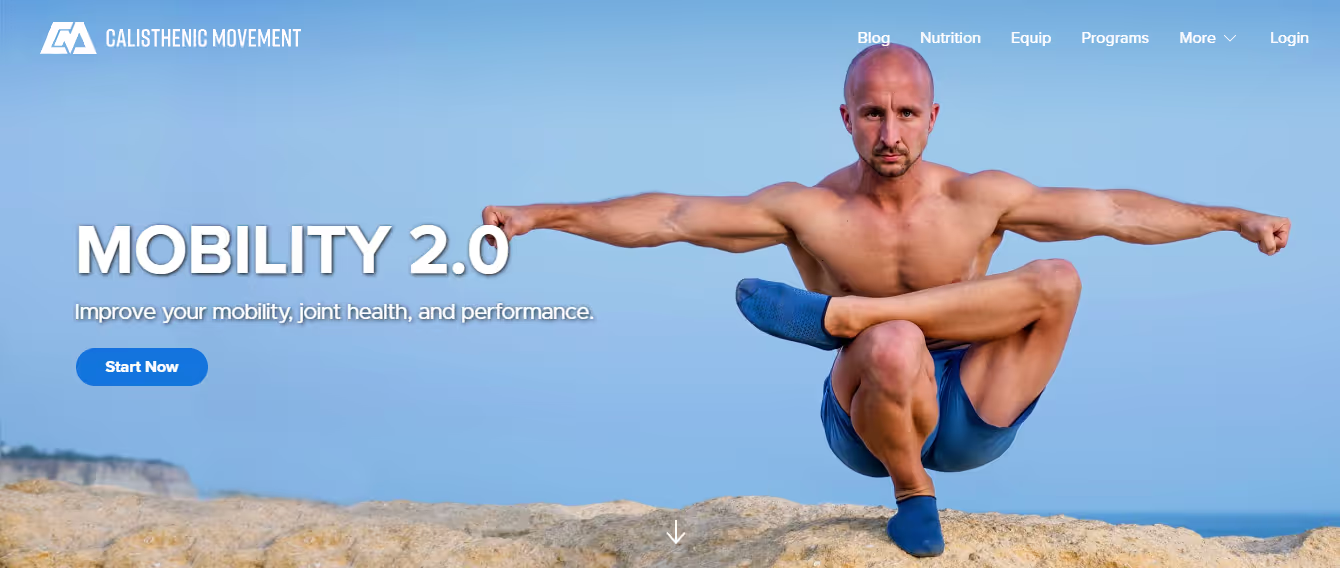
With some stretch, the Cali Move Mobility program is the best stretching program. It is not merely a stretching program. From its core, it focuses on building both flexibility and joint strength, all in preparation for Calisthenics or any other activity requiring a full range of motion power. Cali Move does a good job combining and separating the need for warming up before a workout and delivering standalone exercises. It’s technically not a stretching app since you must log in to a website and require a browser.
Seamless Mobile Experience
The website is so adaptive and fast that you’ll barely notice the difference between it and an app installed on your phone. The sleek design, concise information, crisp imagery, and videos are typical of all Cali Move programs. We work with Cali Move quite intensively and can inform you that they are working on their app. In the future, all their programs will also be available in app form.
The Effectiveness of Cali Move Mobility 2.0
The program effectively gains flexibility and strength and maintains high suppleness and agility. We see Cali Move Mobility 2.0 as the perfect partner exercise for doing Calisthenics as a warmup and in-between-day routine. It is also perfect to accompany dynamic sports. We are convinced you can get similar, if not superior, results with the Cali Move Mobility Program compared to any other stretching app or program.
14. VahVa Fitness Movement 20XX

If you want to combine strength exercises with:
- Flexibility
- Agility
- Mobility
Then VahVa Fitness Movement 20XX is your ideal partner. VahVa Fitness combines elements of strength exercise with mobility exercise holistically, taking inspiration from animalistic movements. The result is an efficient, standalone exercise routine that builds mobility and strength. VahVa is the most focused on the strength of all stretching apps and mobility programs. By learning dynamic skills and combining them, you perform what they call animal flows. These fluid movements are feats of strength, agility, and endurance.
VahVa Movement 20XX has warmups and stretching; many exercises take that a step further. Following the Movement 20XX program benefits the flexibility inherent to the exercises themselves. You need to be fit already. This isn’t the best choice if you’re obese or movement-impaired right now.
15. Alo Moves

Kate Lombardo, yoga director at YogaRenew Teacher Training in Hoboken, New Jersey, tells SELF that the Alo Moves app is an excellent choice for stretching and mobility work. Alo Moves offers options for restorative yoga and stretching, which are great ways to unwind from the day or recover from a workout. Oh, and speaking of workouts?
Alo Moves is also a full-service workout app with thousands of fitness classes, ranging from HIIT to core and mindfulness and meditation offerings. Lombardo loves that you can filter by class length, so whether you have 15 minutes or want a longer class, you can find an option that fits.
Available on: iOS and Android; $20 per month.
16. Yoga Anytime

Gia Calhoun, a certified personal trainer and Pilates instructor, loves Yoga Anytime for stretching and mobility. The app offers various fitness experts and stretching and mobility classes, allowing you to download your favorite videos or hop into a live class.
Calhoun says users feel right in the studio because the platform includes live classes with live students virtually. If you’re not into live classes, you’ll never get bored with their on-demand offerings: The app boasts unlimited access to a library of over 3,100 videos.
Available on iOS and Android: $18 per month
17. Life Time Digital

Life Time Digital is a fantastic resource right at your fingertips, Kemma Cunningham, an ACE-certified personal trainer and health coach, tells SELF. Life Time has various live and on-demand options for people seeking flexibility and mobility, including classes that help your recovery
In addition to stretching and mobility workouts, Life Time is a full-service app that offers over 1,000 weekly courses in areas like yoga, cycling, and strength training. Classes are available via live stream and on-demand.
Available on: iOS and Android; $15 per month.
18. Future

Future isn’t a self-proclaimed stretching app, but the service pairs you with a relevant fitness specialist who creates a custom workout program based on your goals. If you’re serious about getting more flexible, you can select an appropriate coach and let them provide you with the guidance and structure needed to stay motivated. We like the Future app, and the online reviews are very impressive.
Having a real human coach is a more expensive option, but if you like interacting with a real coach instead of just watching videos, this could be the app for you. We selected Future as the best for customized programs because your coach can listen to your requirements and customize the experience to suit you and your goals best. Access to a remote coach certainly boosts motivation, and it is much more affordable than using a personal trainer for face-to-face sessions.
Promo Codes/Offers: 1st month just $19
19. Stretch Sweat Align

Stretch Sweat Align is an app for stretching exercises designed to cater to individuals seeking to enhance their flexibility, boost their fitness levels, and achieve better body alignment through yoga. Developed with the expertise of Denise Payne, the app offers a variety of yoga classes that users can tailor to their specific goals, such as addressing chakra imbalances, opening meridians, or simply improving mobility. The app’s adaptability in class times and objectives makes it a convenient option for integrating yoga into daily routines. At the same time, Denise’s approachable teaching style infuses expertise and humor into the practice.
Stretch Sweat Align serves as a personal yoga guide, offering a diverse range of classes that can be customized to fit the user’s schedule and fitness aspirations. Whether the goal is to delve into yoga's spiritual aspects or focus on physical well-being, the app for stretching exercises provides resources for both. Users can explore various yoga practices to enhance their overall health and mobility, with the flexibility to choose class durations and focus that align with their lifestyle. The app’s design encourages regular yoga practice, making it easier for users to maintain consistency and progress in their fitness journey.
20. StretchBuddy

StretchBuddy is an innovative app for stretching exercises designed to assist users in achieving their flexibility goals. Developed with input from health professionals, it offers a structured stretching program to improve flexibility, health, and overall well-being. The app encourages users to engage in a stretching challenge, promising noticeable improvements in front and middle splits within a year. It features:
- Customizable workout times
- Calendar to track progress
- Bonus exercises for those who show dedication and persistence
StretchBuddy serves as a personal flexibility coach, offering a comprehensive program designed by health experts to help users become more flexible, healthier, and happier. This app for stretching exercises provides various exercises tailored to meet individual flexibility goals, whether achieving perfect splits or improving overall flexibility. The app includes features such as:
- Customizable workout schedules
- Progress tracking
- Challenges that motivate users
To stay consistent with their stretching routines. By incorporating StretchBuddy into their daily routine, users can expect significant improvements in their flexibility, posture, and well-being, making it an essential tool for anyone looking to enhance their physical health through stretching.
21. Daily Stretch

Daily Stretch is an app for stretching exercises designed to enhance flexibility, boost mobility, and contribute to overall well-being through a structured and easy-to-follow stretching routine. Tailored for individuals of all fitness levels, the app offers a variety of stretching sessions ranging from 5 to 20 minutes, making it convenient to integrate into any part of your day, whether it’s upon waking up, during a workout, or after a long day of work. Focusing on making stretching a daily habit, Daily Stretch aims to provide users with a seamless and beneficial experience.
Daily Stretch serves as a personal flexibility coach, offering various stretches for different occasions to help users:
- Alleviate body pain
- Improve energy levels
- Enhance body mobility
It encourages users to develop a daily stretching habit with its planner and reminder features, ensuring that stretching becomes an integral part of their routine. The app emphasizes the importance of stretching as a form of self-care, bridging the gap between physical strength and endurance and laying the foundation for a resilient spirit. It also aims to improve sleep quality and reduce muscle tension, contributing to a more restful and productive lifestyle.
22. Movement Vault
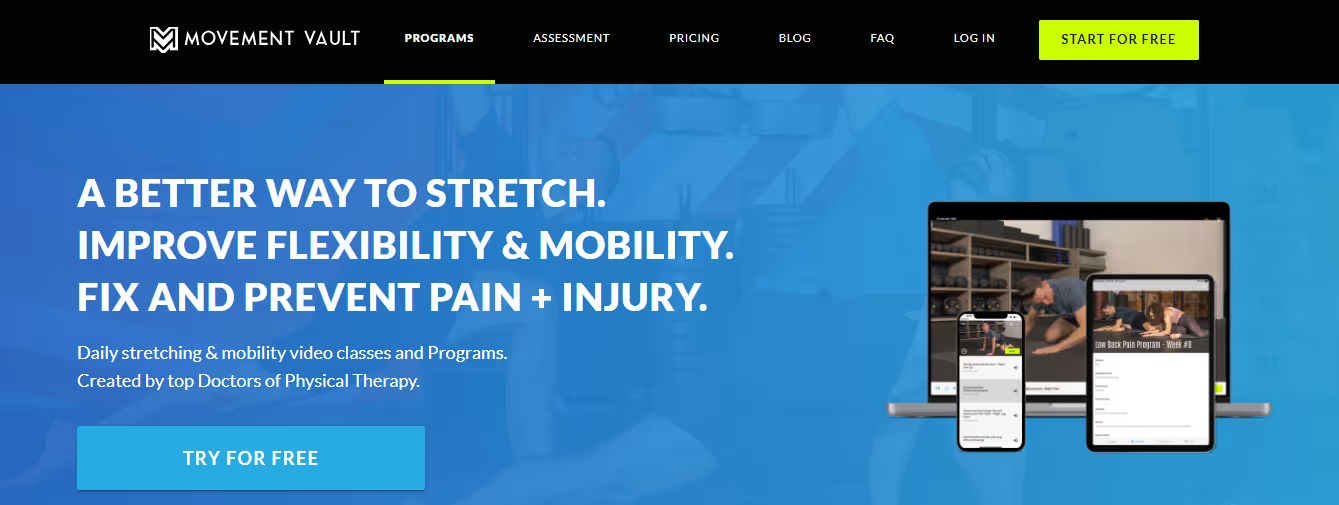
Movement Vault offers a dynamic approach to stretching and mobility, designed to cater to a wide range of users, from athletes to seniors. This app for stretching exercises stands out with its personalized programs that adapt to individual needs. It promotes active stretching techniques combined with muscle and fascia release and muscle activation exercises. This approach aims to deliver fast and considerable improvements in mobility for its users.
Movement Vault provides a comprehensive solution for those looking to enhance their flexibility, alleviate pain, and improve overall performance in daily activities or sports. The app delivers a variety of stretching and mobility classes, each tailored to different levels and age groups. With over 1500+ classes and new content added daily, users can benefit from the expertise of physical therapists and research-backed techniques to address their specific mobility issues and track their progress through a personalized mobility score.
23. SworkIt
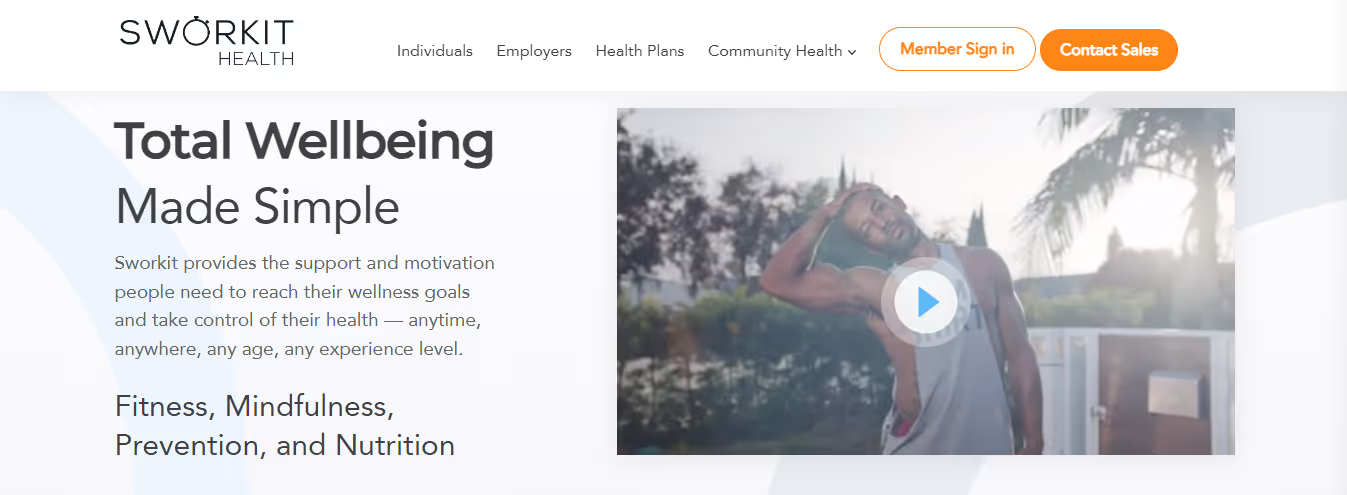
SworkIt for various reasons, but the main one is that it features a stretching exercise program designed for kids. Not only that, all of the kid’s content is free and doesn’t ever require a subscription. Helping your children learn the value of stretching routines at a young age prepares them for sports in the future and prevents injuries when they are young.
While your kids enjoy the app for free, adults can, too. A free trial offer lets you navigate through this stretching app to check out the interface and understand the exercises offered. The programs are customizable to your liking, and the American College of Sports Medicine developed the content so you are getting the best kind of training from professionals.
What to Look for in Stretching Apps

Look for Real Demonstrations of Stretches in Stretching Apps
Every stretching app we tried included some stretching demonstration, whether:
- Photos
- Videos
- Audio
The apps that used real human demonstrations were the most useful to follow along with. In most cases, even the images and graphic illustrations were enough to understand how to perform the stretches.
Find Stretching Apps with Programs or Challenges
The better apps incorporated stretches into more formal challenges or programs designed around a specific theme or goal, such as learning to do the splits. These features can help you stay motivated and make your stretching routine feel less tedious.
Assess the Content Quality and Variety of Stretching Apps
Choosing the right app for stretching exercises involves considering several factors to ensure it meets your specific needs. Assess the app’s content quality and variety. It should offer a wide range of stretches that target different body parts and cater to various fitness levels. Look for apps that provide clear instructions, preferably with video demonstrations, to ensure you can perform the stretches correctly and safely.
Prioritize a User-Friendly Interface
Another important aspect is the user interface. The app should be easy to navigate so that you can quickly find and start your stretching routines.
Customization Features Matter
Customization features are valuable, allowing you to tailor routines to your goals, time constraints, and preferences.
Check for Tracking and Progress Features
Consider the app’s tracking and progress features, which can help you stay motivated by showing your progress over time.
Consider Integration Options
Check if the app integrates with other fitness tools or platforms you use.
Understand the Cost of Stretching Apps
Consider the cost of the app. Some apps are free with optional in-app purchases, while others require a subscription. Determine your budget and decide if the app’s features and benefits justify the expense. Reading reviews from other users can also provide insight into the app’s effectiveness and user satisfaction.
Which Stretching Method is Most Effective?

Different stretching methods can help improve flexibility and range of motion. Each technique has its unique benefits and ideal applications. Stretching can be static, dynamic, ballistic, or proprioceptive neuromuscular facilitation (PNF). The most common techniques are static and dynamic stretches.
While both have benefits, one is better for warming up before exercise, the other for cooling down. Static stretches improve flexibility, while dynamic stretches can help boost performance. PNF stretching is an advanced technique for improving flexibility that can be especially beneficial for athletes.
Static Stretching
According to the American Council on Exercise (ACE), this is the most common type of stretching. “Static stretching involves holding the stretch at its end range for a period of time, usually 30 seconds to two minutes,” says Giordano. A classic example of a static stretch is the hamstring stretch.
Try It:
- Place one leg on a low stool with your hips and feet facing forward.
- Lean forward from your hips until you feel a stretch in the back of your thigh.
- Keep your back flat and knee straight throughout the stretch.
Benefits: Giordano notes that static stretching can improve flexibility and decrease tension as part of a post-exercise cooldown. It can also increase range of motion. According to a systematic review and meta-analysis published in January 2021 in Sports Medicine, static stretching increases the range of motion in the stretched muscle or joint and improves the range of motion in muscles or joints that aren’t being stretched.
Passive Stretching
Passive stretching is similar to static stretching in that it calls for holding a stretch at its end range for 30 seconds to two minutes. The difference is that passive stretching involves applying an external force, like a towel, resistance band, gravity, or another person, to improve flexibility and range of motion, Giordano says. The external force supports you during the stretch, whereas with static stretching, you have to support yourself in the position of the stretch.
Try It:
- Take the static hamstring stretch.
- To make it passive, lie on your back, lift one leg until you feel a stretch in your hamstrings
- Recruit a partner to hold your lifted leg in place.
Benefits: Like static stretching, passive stretching is ideal for cooling down after a workout. Dr. Soliman says stretching increases muscle blood flow, which helps clear waste products like lactic acid. ”That can help with muscle recovery,” he adds.
Active Stretching
This method of stretching involves contracting one group of muscles while the opposite group of muscles is stretched. These stretches are typically held for 10 to 15 seconds without using an external aid, notes Christine Helfrich, PT, DPT, an orthopedic clinical specialist with Hinge Health, a digital joint and muscle care clinic. “An example would be using your back muscles to open your arms and chest really wide to feel a stretch on the front part of your pectoral and chest muscles,” Helfrich says.
Try It:
- Stand straight with both feet flat on the floor.
- Spread your arms wide, parallel to the floor.
- Gently lean back until you feel a stretch across the front of your chest.
Benefits: Active stretching helps elongate the target muscles, increase blood flow, and get your joints moving. “So it’s warming up the muscles to prepare them for activity,” Soliman says. It also improves mobility and decreases pain or soreness, Dr. Helfrich notes.
Isometric Stretching
“This form of stretching occurs when the muscle that is being stretched is contracted in a static position,” Helfrich says. Essentially, you’ll take a static or active stretch and add an isometric muscle contraction, where the muscle doesn’t change length (visibly move). “An example would be when you’re stretching your quad,” says Helfrich.
Try It:
- Bend one knee to bring your ankle close to your glutes while standing.
- Firmly hold your ankle in place
- Try to straighten your knee against the resistance of your hand.
Benefits: This type of stretching improves your range of motion and strengthens your muscles at their end range of motion, “which is typically where they are the weakest,” Helfrich says. This perk makes isometric stretching helpful for injury prevention, she adds.
Proprioceptive Neuromuscular Facilitation (PNF)
PNF, which stands for proprioceptive neuromuscular facilitation, is typically performed with the help of a practitioner, Giordano says. Per ACE, it alternates between contracting and relaxing a muscle to deepen the range of motion. There are several different types of PNF, including:
- Contract-relax
- Hold relax
- Contract-relax
Agonist contract, according to a research paper. While these types differ slightly, they’re generally performed by contracting the stretched muscle at 75 to 100 percent of its maximum, holding for 10 seconds, and then relaxing the paper notes.
Try It: Per ACE, a hamstring stretch using the PNF “hold-relax” method would be as follows:
- Lie on your back and have someone lift one leg toward the ceiling until you feel a stretch in the back of your lifted leg.
- Hold there for 10 seconds.
- Hold and contract your hamstring for six seconds while the other person applies force.
- Relax and hold the stretch for 30 seconds.
Benefits: PNF is used in therapeutic and athletic settings to rehabilitate injuries, improve performance, increase strength, and encourage the full range of motion, according to a research paper. It’s thought that resisting force while stretching and then relaxing into a passive stretch before repeating the contraction sends signals from the nervous system that tell the muscles it’s safe to stretch further, the paper explains. The contraction builds strength while achieving a deeper stretch, which improves flexibility and range of motion.
Dynamic Stretching
According to the HSS, dynamic stretching involves actively tightening muscles and moving joints through their full range of motion. Static stretches are meant to be held for a long time, but dynamic stretches aim to get the body moving. “It’s a way to warm up the muscle and prepare it for exercise,” Soliman says.
Try It: Walking lunges, leg swings (standing on one leg and swinging the other in front of and behind you through the full range of motion), and torso twists (moving your torso from one side to other without moving your feet or legs) are a few examples of dynamic stretches, per the HSS.
Benefits: According to the HSS, dynamic stretches are functional and sport-specific movements that boost muscle temperature and reduce stiffness, which may improve speed, agility, and acceleration in your chosen activity. A research review found that several studies have found short-term increases in power, sprint, or jump performance after athletes perform dynamic stretches.
Other Types of Stretching
Somatic Stretching
Even if you’ve never heard of somatic stretching, you’ve likely come across it in commonly associated forms of exercise, such as yoga, pilates, qigong, the Feldenkrais Method, and tai chi.
Somatic stretching differs from other stretching methods in that it doesn’t have a set protocol; you don’t have to target specific muscle groups or hold a stretch for a pre-established length. Soliman says you release muscular tension by performing gentle movements and staying aware of your body and any sensations that come.
For example, you can arch your back and stretch. As you do, notice where you feel tension and adjust your movements. You can raise your arms overhead, twist your torso from side to side, or round forward. Because somatic stretching doesn’t require muscle contractions, it may qualify as passive or active stretching.
Try It: This total-body stretch practice, per Johns Hopkins Medicine’s YouTube channel, uses a mix of held stretches and slow, fluid movements to bring mobility and flexibility to the body.
Benefits: Studies in somatic stretching need to be improved. However, this stretching method may improve your mind-body connection, “which can allow people to be more in tune with their body and move in ways their body craves,” Helfrich says. By using slow, controlled movements combined with deep breathing, you may experience reduced muscle tension and pain, improved blood flow to the muscles, and a more relaxed state of mind.
Pliability: The Best Yoga App for Athletes
Pliability offers a fresh take on yoga tailored for performance-oriented individuals and athletes. Our app features a vast library of high-quality videos designed to:
- Improve flexibility
- Aid recovery
- Reduce pain
- Enhance range of motion
Personalized Mobility Programs for Optimal Health
Pliability provides daily-updated custom mobility programs for those interested in optimizing their health and fitness. It also includes a unique body-scanning feature to pinpoint mobility issues. If you're feeling limited by pain or your ability to move, Pliability aims to complement your fitness routine and help you move better.
Sign up today for seven days free on iPhone, iPad, Android, or our website to use our mobility app to improve flexibility, aid recovery, reduce pain, and enhance range of motion.
How Long Does it Take to See the Benefits of Stretching?

We are often asked how long it will take for a person to see results from stretch and strength programs. For strength, expect to spend twelve weeks before seeing changes to muscle strength and size. Expect to spend eight weeks stretching before seeing increased muscle length and joint movement.
Stretching Needs Eight Weeks For Change To Occur
In our assessment, we may determine you have tightness and restriction in specific muscles or joints that prevent you from achieving your goals. Like strength training, tissue adaptation in stretching takes time and consistency.
Tissues adapt to the loads and forces they are placed in repeatedly. If you lift heavy things repeatedly, the muscles will adapt and strengthen. If you stretch your muscles repeatedly, eventually, the muscles will lengthen, and joint range will increase. But how long will this process take?
The First Four Weeks: Sensation Versus Lengthen
Many studies show that after four weeks of consistent daily stretching, the primary improvement is that the sensation of a stretch is greatly lessened, but muscle length has not increased. This may seem discouraging, but we can still use these findings to our advantage. How often do you back off your stretch because the intensity of the stretch is too strong?
Probably very often. This discomfort is blocking you from getting into a deeper stretch, not allowing you to gain full flexibility. If you knew that you would experience less discomfort within four weeks with that stretch, that’s something to look forward to. The greater ease at which you can access the full flexibility of your muscles, the greater range of motion you will have when needed.
Stretching for Eight Weeks and Beyond
Research shows, although not definitive that with an eight-week stretching program, we start to see physiological changes in muscle length and increased joint movement. The great news is these studies have also shown an increase in athletic performance at the end of the eight weeks. Strengthening muscles at lengthened positions and utilizing eccentric exercises (lengthened contractions of muscles) also produce long-term increases in flexibility.
Related Reading
- Gowod Vs Pliability
- Tennis Mobility Exercises
- Weighted Mobility Exercises
- Cervical Mobility Exercises
- Resistance Band Mobility Exercises
- Rib Mobility Exercises
- Glute Mobility Exercises
- Best Yoga App
- Free Apps For Stretching And Flexibility
- Mobility Apps
- Chest Mobility Exercises
- Glute Stretches
- Gluteus Medius Stretch
- Glute Stretch
- Cervical Radiculopathy Exercises
Improve Your Flexibility with Our Mobility App Today | Get 7 Days for Free on Any Platform
Pliability offers a fresh take on yoga tailored for performance-oriented individuals and athletes. Our app features a vast library of high-quality videos designed to:
- Improve flexibility
- Aid recovery
- Reduce pain
- Enhance range of motion
Personalized Mobility Programs for Optimal Health
Pliability provides daily-updated custom mobility programs for those interested in optimizing their health and fitness. It also includes a unique body-scanning feature to pinpoint mobility issues. If you're feeling limited by pain or your ability to move, Pliability aims to complement your fitness routine and help you move better.
Sign up today for seven days free on iPhone, iPad, Android, or our website to use our mobility app to improve flexibility, aid recovery, reduce pain, and enhance range of motion.

